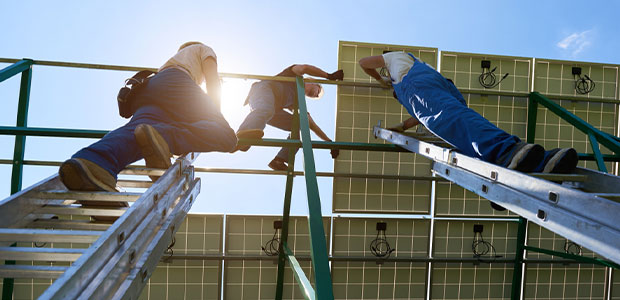
How the Magic of Numbers 4, 5, 6 Play a Role in Fall Protection
As safety professionals, we must remember the magic numbers and remind employees of them to save lives.
- By Ralph Blessing
- Dec 01, 2021
As safety professionals you might ask yourselves, “Is the standard for fall protection 4 feet, 5 feet, 6 feet, 10 feet, 15 feet or 30 feet? Why is there so much disparity regarding how much impact the human body can take?” The National Safety Council reported that 146 workers were killed in falls on the same level in 2019. The concept of horizontal versus vertical standards in OSH is driven by common sense when it comes to fall protection. Since no employee is more likely to survive a fall than any other, these standards are vital to keeping everyone safe. So, why do we have these numbers?
Simple Math Solutions
The numbers four, five and six represent general, maritime and construction (GMC) industry fall protection standards, respectively. When teaching fall protection, I enjoy employing math to assist the students in remembering these standards. We begin with the three most important numbers representing the general, maritime and construction industries: 4-5-6.
These three numbers, when multiplied and added, can greatly assist in remembering safe heights that one might employ during different workplace safety scenarios. These common heights used in the safety industry help to determine how far a person might fall before sustaining serious injuries or even death.
Scaffolds. According to OSHA’s standard for Scaffolding, 1926.451, fall protection must be provided for employees working on a scaffold at heights greater than 10 feet. You can remember this standard height by adding the magic numbers four and six: 4 + 6 = 10 feet.
Walking/Working Surfaces. According 1910.28, or Duty to Have Fall Protection and Falling Object Protection, employers must provide fall protection for workers who will be engaged in an activity on a walking/working surface with an unprotected edge at heights of 15 feet or more. To remember this standard number you can use all three magic numbers: 4 +5 + 6 = 15 feet.
Ladders. When it comes to wooden step ladders, OSHA suggests that employees working at heights great than 20 feet have fall protection when using a wooden step ladder. You can use magic numbers four and five to remember this one: 4 x 5 = 20 feet.
For employees who are climbing or working on fixed ladders, it is suggested that employers provide fall protection for heights greater than 24 feet. For this standard height, you can use magic numbers four and six: 4 x 6 = 24 feet.
Another ladder number you might want to remember is the height of a wooden two-section ladder. For this, the maximum height is 60 feet. You can use a formula made up of magic numbers four and six to remember this standard height: (4 + 6)6 = 60 feet.
Leading Edge. According to 1926.760 the OSHA standard for Fall Protection, an employee working at the leading edge of a controlled decking zone shall be protected from fall hazards more than two stories, or 30 feet, whichever is less. You can use the magic numbers five and six to remember this standard height: 5 x 6 = 30 feet.
There are many standards for fall protection and thus, valid reasoning for requiring varied heights. Nevertheless, it still poses a challenge to safety practitioners everywhere. It would be more prudent to establish a baseline for all. In reviewing fall protection and the plethora of standards concerning the heights based on industry, we as safety professionals must remember the magic numbers 4, 5 and 6. By reminding our employees and clients of this rule, we can save lives.
This article originally appeared in the November/December 2021 issue of Occupational Health & Safety.
About the Author
Columbia Southern University Adjunct Professor Ralph Blessing has more than 27 years of occupational safety and health experience encompassing general industry, construction, training, and public speaking. He became certified as an afloat safety manager and received his Safety Management Certificate from the Naval Safety Center during his tour of duty in the U.S. Navy. Blessing holds a master's degree in occupational safety and health.